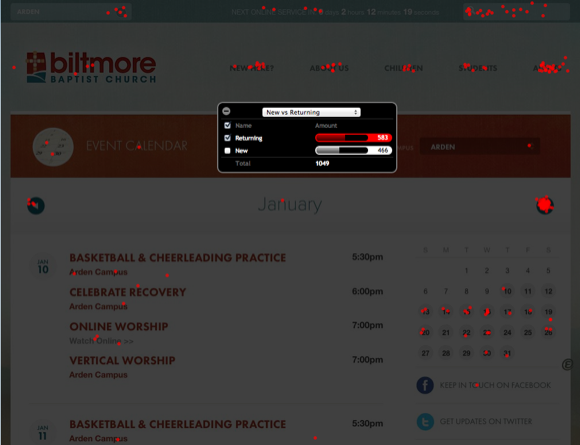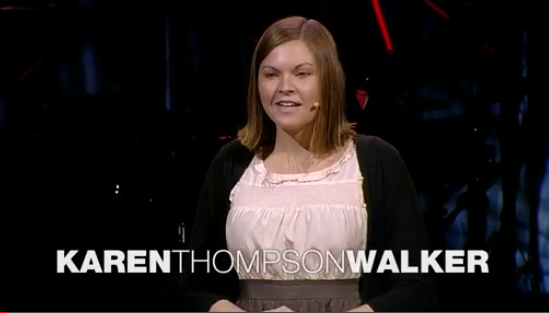Objections abound when it come to tracking, analyzing, and acting on church website data.
Confusion about where to start, faulty beliefs about data application, and dreaded assumptions lead many a church worker to believe web stats don’t matter.
Au contraire, my web friends. Tracking website data is not only a necessity, it enables you to serve your congregation better.
How? Read on, reader. Here’s how to use analytics with a service-minded mentality.
Attract more visitors to your church.
The more people are able to find your site, the greater the chances they’ll come to visit you on the weekends. The number of people who found out about their church website using a search engine increased 91% from 2009 to 2012.(Tweet this!)
Data analytics platforms like Google Analytics can show you the search engine terms people are plugging in to find your site. Maybe they’re accurate (e.g. “des moines church,” “lutheran,” etc.). But maybe they’re not (e.g. “san diego pet store,” “community center,” etc.).
You’ll never known unless you dig in and find out. You could have a wayward meta tag feeding Google the wrong info, thus diverting would-be visitors from your site (and, unfortunately, your church).
Optimizing your search results, along with your site speed and information architecture, allow would-be visitors to easily find you on the web. Doing so greatly increases the chance they’ll visit, thereby enlarging your church community.
Increase participation in programs and events.
Knowing where the bottlenecks are on your website is critical for understanding what community members want online. For instance, after working with MonkDev, Biltmore Baptist has a clear, visual picture of where their returning visitors are going:

This information allows the church to craft a website experience that keeps users looking and connected. Knowing what your people want—sometimes even before the event occurs—can help you intelligently allocate resources moving forward.
Build a website that produces disciples.
Our research shows the more church members interact with the website, the more likely they are to feel like a part of the larger community. Isn’t that interesting? When the website serves as a hub which facilitates community, people feel like they belong.
Creating a website where participation occurs doesn’t happen by accident. It’s something we call Mission Process Design: intentionally crafting an online discipleship path for users. This means the website actually moves people from newcomer, to participant, to engaged member, to all-star volunteer.
Again, a church doesn’t stumble into effective Mission Process Design. It takes hard work, winnowing the essence of your mission down with clarity, and translating your discipleship process to the web.
But it can (and does) happen. We’ve seen it with our own eyes. But it takes a commitment to data and finding out what’s actually working. The results, friends, are astounding. (In fact, you can find out if Ministry Process Design is right for your church.
Conclusion
Service doesn’t only happen on Sunday morning. Digging into church website data should be on the same level as serving as a greeter, volunteering in a soup kitchen, or leading a group Bible study for high school students. If you’re not sure where to start, let us help. Either way, your congregation deserves a website that works.
Read more from Justin here.

Tags: Analytics, Attention, Awareness, Justin Wise, website
|
What is MyVisionRoom? > | Back to Communication >
































